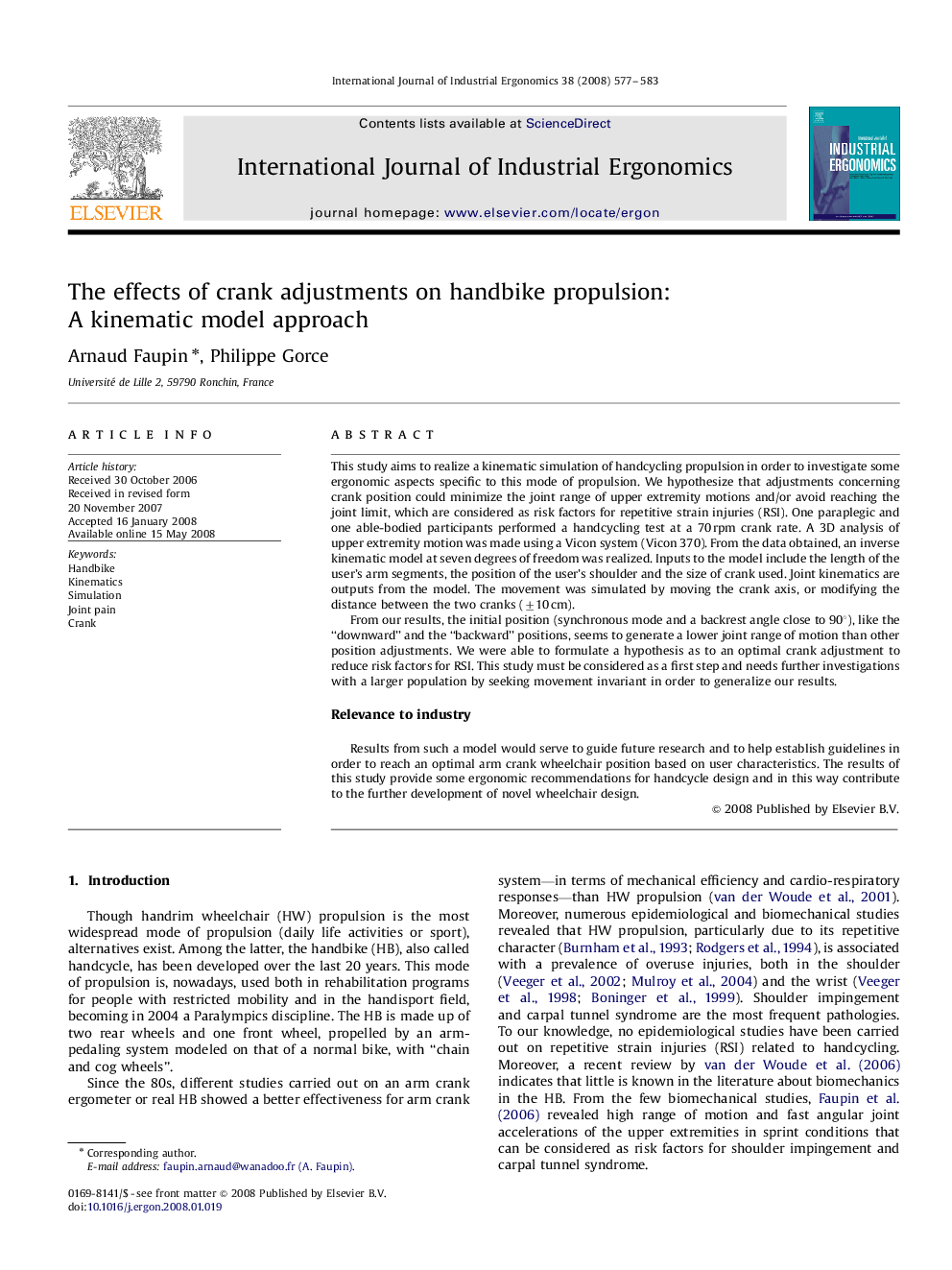| Article ID | Journal | Published Year | Pages | File Type |
|---|---|---|---|---|
| 1096687 | International Journal of Industrial Ergonomics | 2008 | 7 Pages |
This study aims to realize a kinematic simulation of handcycling propulsion in order to investigate some ergonomic aspects specific to this mode of propulsion. We hypothesize that adjustments concerning crank position could minimize the joint range of upper extremity motions and/or avoid reaching the joint limit, which are considered as risk factors for repetitive strain injuries (RSI). One paraplegic and one able-bodied participants performed a handcycling test at a 70 rpm crank rate. A 3D analysis of upper extremity motion was made using a Vicon system (Vicon 370). From the data obtained, an inverse kinematic model at seven degrees of freedom was realized. Inputs to the model include the length of the user's arm segments, the position of the user's shoulder and the size of crank used. Joint kinematics are outputs from the model. The movement was simulated by moving the crank axis, or modifying the distance between the two cranks (±10 cm).From our results, the initial position (synchronous mode and a backrest angle close to 90°), like the “downward” and the “backward” positions, seems to generate a lower joint range of motion than other position adjustments. We were able to formulate a hypothesis as to an optimal crank adjustment to reduce risk factors for RSI. This study must be considered as a first step and needs further investigations with a larger population by seeking movement invariant in order to generalize our results.Relevance to industryResults from such a model would serve to guide future research and to help establish guidelines in order to reach an optimal arm crank wheelchair position based on user characteristics. The results of this study provide some ergonomic recommendations for handcycle design and in this way contribute to the further development of novel wheelchair design.
